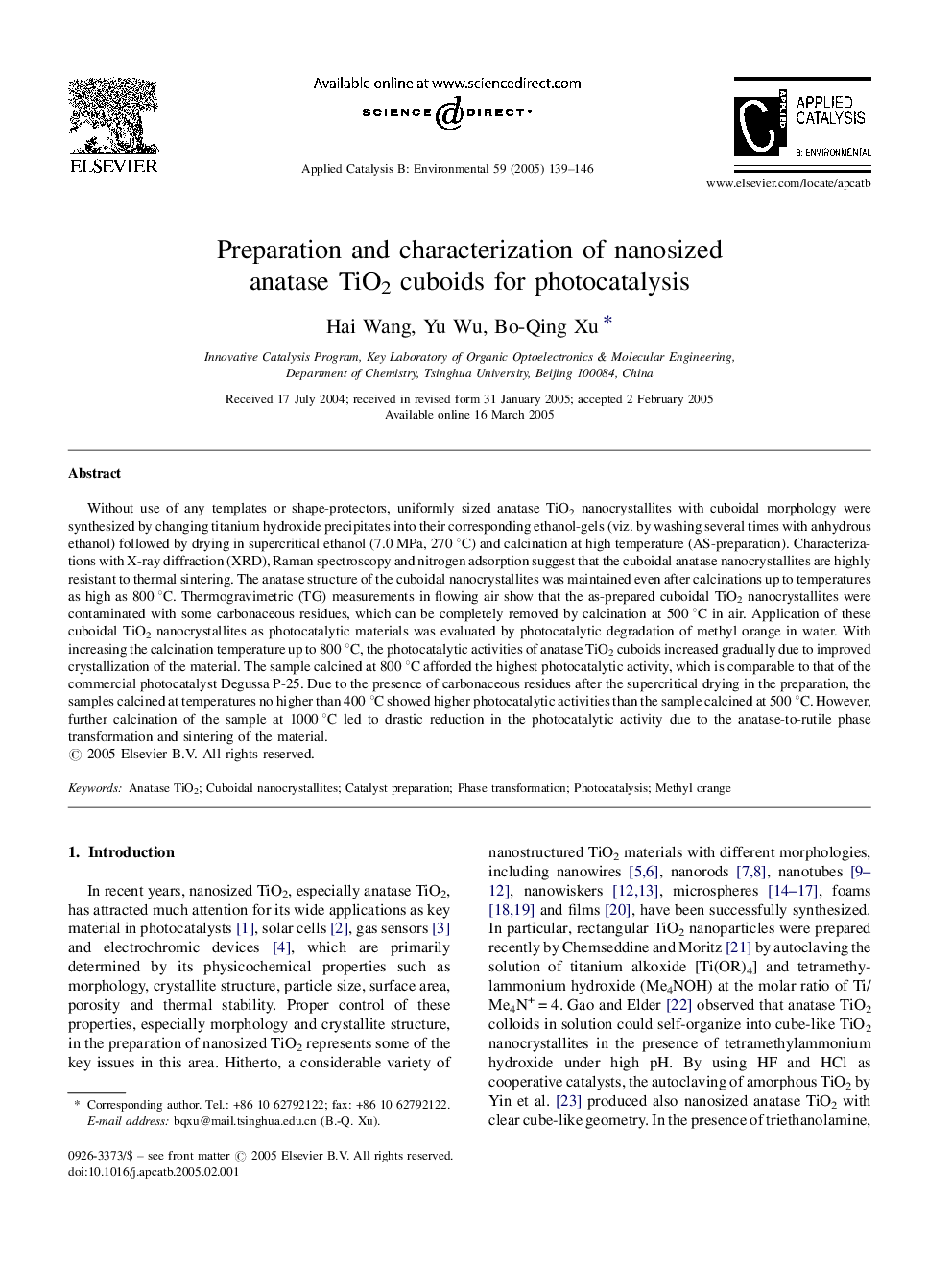| کد مقاله | کد نشریه | سال انتشار | مقاله انگلیسی | نسخه تمام متن |
|---|---|---|---|---|
| 9609839 | 46529 | 2005 | 8 صفحه PDF | دانلود رایگان |
عنوان انگلیسی مقاله ISI
Preparation and characterization of nanosized anatase TiO2 cuboids for photocatalysis
دانلود مقاله + سفارش ترجمه
دانلود مقاله ISI انگلیسی
رایگان برای ایرانیان
کلمات کلیدی
موضوعات مرتبط
مهندسی و علوم پایه
مهندسی شیمی
کاتالیزور
پیش نمایش صفحه اول مقاله

چکیده انگلیسی
Without use of any templates or shape-protectors, uniformly sized anatase TiO2 nanocrystallites with cuboidal morphology were synthesized by changing titanium hydroxide precipitates into their corresponding ethanol-gels (viz. by washing several times with anhydrous ethanol) followed by drying in supercritical ethanol (7.0 MPa, 270 °C) and calcination at high temperature (AS-preparation). Characterizations with X-ray diffraction (XRD), Raman spectroscopy and nitrogen adsorption suggest that the cuboidal anatase nanocrystallites are highly resistant to thermal sintering. The anatase structure of the cuboidal nanocrystallites was maintained even after calcinations up to temperatures as high as 800 °C. Thermogravimetric (TG) measurements in flowing air show that the as-prepared cuboidal TiO2 nanocrystallites were contaminated with some carbonaceous residues, which can be completely removed by calcination at 500 °C in air. Application of these cuboidal TiO2 nanocrystallites as photocatalytic materials was evaluated by photocatalytic degradation of methyl orange in water. With increasing the calcination temperature up to 800 °C, the photocatalytic activities of anatase TiO2 cuboids increased gradually due to improved crystallization of the material. The sample calcined at 800 °C afforded the highest photocatalytic activity, which is comparable to that of the commercial photocatalyst Degussa P-25. Due to the presence of carbonaceous residues after the supercritical drying in the preparation, the samples calcined at temperatures no higher than 400 °C showed higher photocatalytic activities than the sample calcined at 500 °C. However, further calcination of the sample at 1000 °C led to drastic reduction in the photocatalytic activity due to the anatase-to-rutile phase transformation and sintering of the material.
ناشر
Database: Elsevier - ScienceDirect (ساینس دایرکت)
Journal: Applied Catalysis B: Environmental - Volume 59, Issues 3â4, 8 August 2005, Pages 139-146
Journal: Applied Catalysis B: Environmental - Volume 59, Issues 3â4, 8 August 2005, Pages 139-146
نویسندگان
Hai Wang, Yu Wu, Bo-Qing Xu,